-
 Bitcoin
Bitcoin $105,072.9173
-0.46% -
 Ethereum
Ethereum $2,624.9916
-0.45% -
 Tether USDt
Tether USDt $1.0005
0.00% -
 XRP
XRP $2.2087
-1.64% -
 BNB
BNB $667.4636
-0.26% -
 Solana
Solana $153.4648
-2.05% -
 USDC
USDC $0.9999
0.01% -
 Dogecoin
Dogecoin $0.1901
-2.99% -
 TRON
TRON $0.2735
1.88% -
 Cardano
Cardano $0.6782
-2.48% -
 Hyperliquid
Hyperliquid $35.4649
-2.31% -
 Sui
Sui $3.1889
-2.26% -
 Chainlink
Chainlink $13.8726
-3.51% -
 Avalanche
Avalanche $20.2543
-5.33% -
 Stellar
Stellar $0.2672
-2.62% -
 UNUS SED LEO
UNUS SED LEO $8.8766
-0.62% -
 Bitcoin Cash
Bitcoin Cash $403.7804
-0.30% -
 Toncoin
Toncoin $3.1985
-0.02% -
 Shiba Inu
Shiba Inu $0.0...01285
-2.08% -
 Hedera
Hedera $0.1683
-2.57% -
 Litecoin
Litecoin $88.2152
-2.65% -
 Polkadot
Polkadot $4.0484
-3.72% -
 Monero
Monero $317.1060
-8.36% -
 Ethena USDe
Ethena USDe $1.0013
-0.01% -
 Bitget Token
Bitget Token $4.7414
-1.70% -
 Dai
Dai $0.9998
-0.03% -
 Pepe
Pepe $0.0...01196
-3.84% -
 Pi
Pi $0.6489
-0.33% -
 Aave
Aave $265.7810
0.15% -
 Uniswap
Uniswap $6.3507
-5.73%
Is the pullback after breaking through the platform an opportunity? When will there be a false breakthrough?
A pullback after a breakout can be an entry opportunity if the breakout is strong and the pullback shallow; false breakouts often occur with low volume and quick reversals.
May 29, 2025 at 10:50 pm
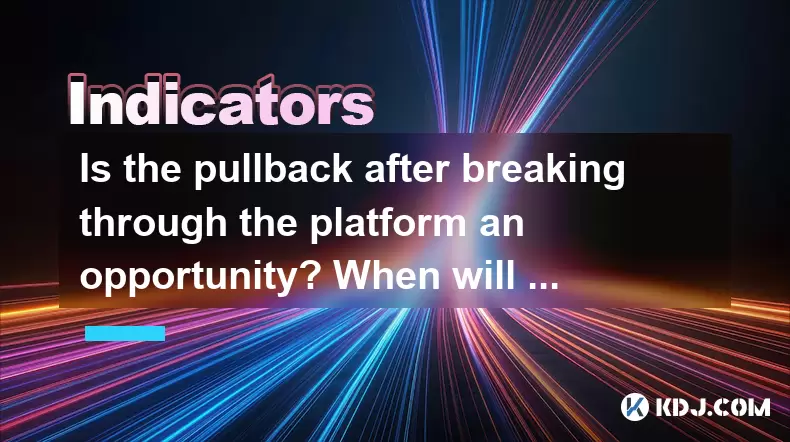
Is the Pullback After Breaking Through the Platform an Opportunity? When Will There Be a False Breakthrough?
In the world of cryptocurrencies, understanding market movements and technical patterns is crucial for traders and investors. Two key concepts that often come into play are the pullback after breaking through a platform and false breakthroughs. These phenomena can significantly impact trading strategies and investment decisions. In this article, we will delve into these concepts, explore when they occur, and discuss whether the pullback after a breakout can be considered an opportunity.
Understanding Breakouts and Pullbacks
A breakout occurs when the price of a cryptocurrency moves above or below a significant resistance or support level, often referred to as a platform. This movement suggests a potential shift in market sentiment and can signal the start of a new trend. However, it is common for the price to experience a pullback after a breakout. A pullback is a temporary reversal in the price direction, where the price retraces some of its gains before resuming the new trend.
Pullbacks can be seen as opportunities for traders to enter the market at a better price than during the initial breakout. When a cryptocurrency breaks out of a platform and then pulls back, it often tests the validity of the breakout. If the price holds above the breakout level after the pullback, it can be a strong indication that the new trend is likely to continue.
Identifying Opportunities in Pullbacks
To determine if a pullback after a breakout is an opportunity, traders need to consider several factors. Firstly, the strength of the initial breakout is crucial. A strong breakout with high volume and clear market sentiment is more likely to result in a sustainable trend. Secondly, the depth of the pullback should be analyzed. A shallow pullback that quickly reverses is often a better opportunity than a deep pullback that takes longer to recover.
Additionally, traders should look at technical indicators such as moving averages, RSI (Relative Strength Index), and MACD (Moving Average Convergence Divergence) to confirm the strength of the trend and the potential for a reversal. If these indicators align with the breakout and subsequent pullback, it increases the likelihood that the pullback is an entry point rather than a false signal.
Recognizing False Breakouts
A false breakout, also known as a fakeout, occurs when the price breaks through a significant level but then quickly reverses and moves back within the original range. False breakouts can be frustrating for traders as they often lead to losses if not identified correctly. Understanding when a false breakout is likely to occur can help traders avoid these pitfalls.
One of the key indicators of a potential false breakout is low trading volume. If the breakout happens with low volume, it suggests that there is not enough market interest to sustain the new trend. Additionally, quick reversals after the breakout can be a sign of a false breakout. If the price moves back below the breakout level shortly after breaking out, it is a strong indication that the breakout was not genuine.
Strategies to Avoid False Breakouts
To avoid falling into the trap of false breakouts, traders can employ several strategies. Firstly, waiting for confirmation after a breakout can be beneficial. Instead of entering the market immediately after a breakout, traders can wait for the price to close above the breakout level for a certain period, such as a day or a few hours, to confirm the validity of the breakout.
Secondly, using stop-loss orders can help mitigate the risk of false breakouts. By setting a stop-loss just below the breakout level, traders can limit their potential losses if the price reverses. Additionally, combining multiple technical indicators to confirm the breakout can increase the reliability of the signal. For instance, if the price breaks out of a platform and the RSI and MACD also indicate a strong trend, it reduces the likelihood of a false breakout.
Case Studies of Pullbacks and False Breakouts
To illustrate these concepts, let's look at a couple of case studies from the cryptocurrency market. In the first case, Bitcoin (BTC) experienced a breakout above a key resistance level at $50,000 in a bullish market. After the breakout, the price pulled back to around $48,000 before resuming its upward trend. This pullback provided an opportunity for traders to enter the market at a lower price, and the subsequent trend confirmation validated the initial breakout.
In contrast, Ethereum (ETH) experienced a false breakout when it briefly surpassed $4,000 but quickly reversed back below the level. The breakout occurred with low volume and was followed by a sharp decline, indicating that the breakout was not supported by strong market sentiment. Traders who entered the market during this false breakout would have faced significant losses.
Practical Steps to Trade Pullbacks and Avoid False Breakouts
For traders looking to capitalize on pullbacks and avoid false breakouts, here are some practical steps to follow:
- Monitor the breakout closely: Pay attention to the volume and market sentiment during the breakout. High volume and clear market interest are positive signs.
- Wait for confirmation: Instead of entering immediately after a breakout, wait for the price to close above the breakout level for a certain period to confirm the breakout.
- Analyze technical indicators: Use indicators like RSI, MACD, and moving averages to confirm the strength of the trend and the potential for a reversal.
- Set stop-loss orders: Place stop-loss orders just below the breakout level to limit potential losses if the price reverses.
- Combine multiple indicators: Increase the reliability of the breakout signal by using multiple technical indicators to confirm the trend.
Frequently Asked Questions
Q: Can a pullback after a breakout be a sign of a trend reversal?
A: While a pullback after a breakout can sometimes be a sign of a trend reversal, it is more commonly a temporary retracement within a continuing trend. To determine if it is a reversal, traders should look at the overall market sentiment, volume, and technical indicators. If these factors suggest a strong trend, the pullback is likely to be followed by a continuation of the trend.
Q: How can I differentiate between a pullback and a false breakout in real-time?
A: Differentiating between a pullback and a false breakout in real-time can be challenging. Key factors to consider include the volume during the breakout, the speed of the reversal, and the confirmation from technical indicators. If the breakout is supported by high volume and the price holds above the breakout level after the pullback, it is more likely to be a genuine breakout. Conversely, a quick reversal with low volume is a strong indicator of a false breakout.
Q: What role does market sentiment play in identifying pullbacks and false breakouts?
A: Market sentiment plays a crucial role in identifying pullbacks and false breakouts. Positive market sentiment can support a breakout and increase the likelihood that a pullback is a temporary retracement within a continuing trend. Conversely, negative or uncertain market sentiment can lead to false breakouts, as there may not be enough market interest to sustain the new trend. Traders should monitor news, social media, and market analysis to gauge the overall sentiment and its potential impact on price movements.
Q: Are there specific cryptocurrencies that are more prone to false breakouts?
A: While all cryptocurrencies can experience false breakouts, some may be more prone to them due to factors such as lower liquidity and higher volatility. Altcoins with smaller market caps and less trading volume are generally more susceptible to false breakouts compared to major cryptocurrencies like Bitcoin and Ethereum. Traders should be particularly cautious when trading these assets and use robust risk management strategies to mitigate potential losses.
Disclaimer:info@kdj.com
The information provided is not trading advice. kdj.com does not assume any responsibility for any investments made based on the information provided in this article. Cryptocurrencies are highly volatile and it is highly recommended that you invest with caution after thorough research!
If you believe that the content used on this website infringes your copyright, please contact us immediately (info@kdj.com) and we will delete it promptly.
- Coinbase (NASDAQ: COIN) Joins the S&P 500 Index on May 19, 2025, Shares Jump 10%
- 2025-06-05 13:10:12
- Bitcoin (BTC) Price Surges Past $103,000 as Spot Market Reserves Continue to Drain
- 2025-06-05 13:10:12
- Animoca Brands, a Web3 investment company, is planning an IPO in New York
- 2025-06-05 13:05:12
- RWA Market Is Holding Steady Despite Some Pullbacks. Here Are 4 Promising Projects to Watch
- 2025-06-05 13:05:12
- Bitcoin (BTC) halving event has now been slightly more than a year in the rearview mirror
- 2025-06-05 13:00:13
- Coinbase (Nasdaq: COIN) Joins the S&P 500 Index on 19 May 2025
- 2025-06-05 13:00:13
Related knowledge
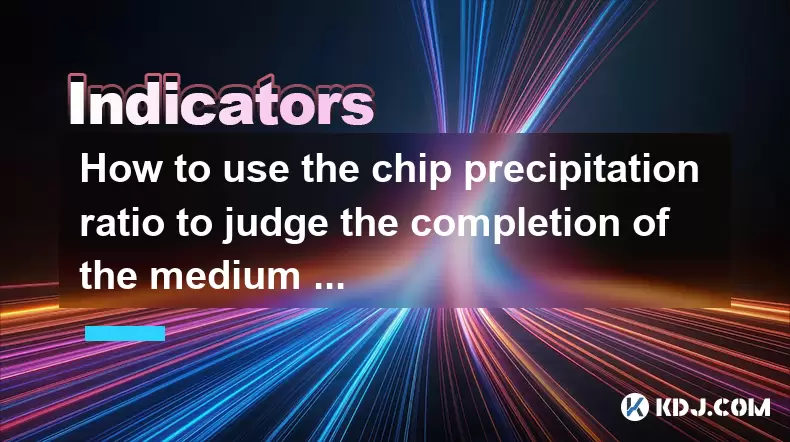
How to use the chip precipitation ratio to judge the completion of the medium and long-term bottom construction?
Jun 04,2025 at 03:36am
The chip precipitation ratio is a crucial metric used by investors to assess the accumulation of chips (or shares) at different price levels over time. This ratio helps in understanding the distribution of chips and can be a powerful tool for determining the completion of medium and long-term bottom construction in the cryptocurrency market. By analyzin...
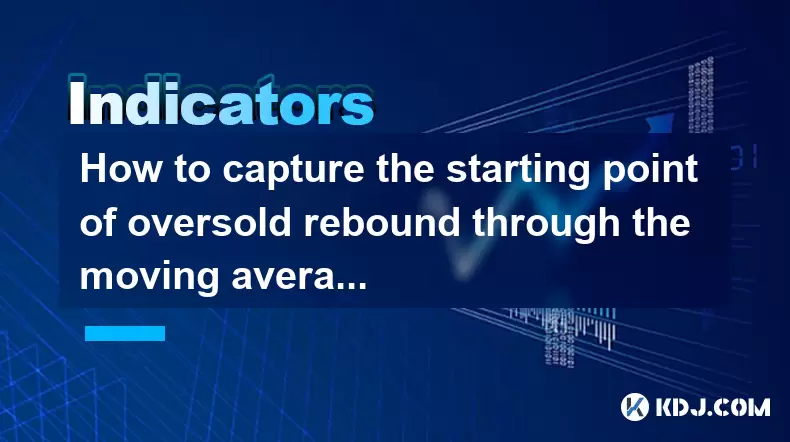
How to capture the starting point of oversold rebound through the moving average gravity reversal strategy?
Jun 04,2025 at 01:01pm
The moving average gravity reversal strategy is a sophisticated approach used by traders to identify potential entry points for buying cryptocurrencies when they are considered oversold. This strategy leverages the concept of moving averages to pinpoint moments when a cryptocurrency might be poised for a rebound. In this article, we will delve into the ...
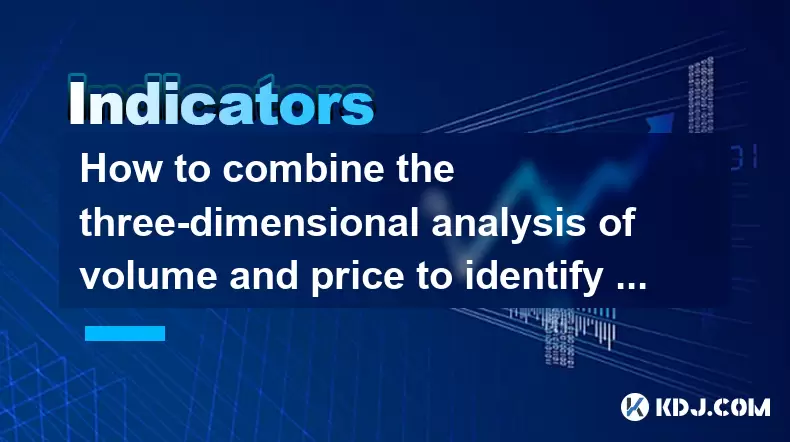
How to combine the three-dimensional analysis of volume and price to identify the golden buying point of breakthrough and retracement?
Jun 03,2025 at 11:42pm
In the dynamic world of cryptocurrencies, identifying the optimal buying points is crucial for maximizing profits and minimizing risks. One effective method to achieve this is by combining three-dimensional analysis of volume and price to pinpoint the golden buying points during breakouts and retracements. This article will delve into how to use this ap...
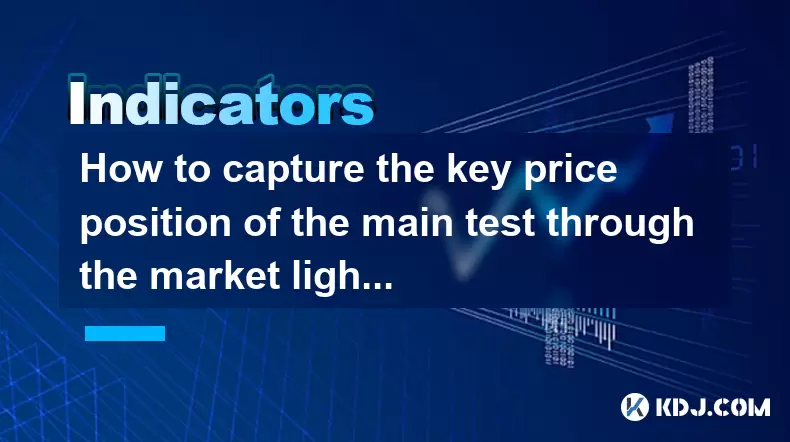
How to capture the key price position of the main test through the market lightning chart?
Jun 02,2025 at 06:07pm
Introduction to Market Lightning ChartThe market lightning chart is a powerful tool used by cryptocurrency traders to visualize price movements and identify key price positions. This chart type provides a detailed view of market activity, allowing traders to spot trends, reversals, and other significant price levels quickly. By understanding how to use ...
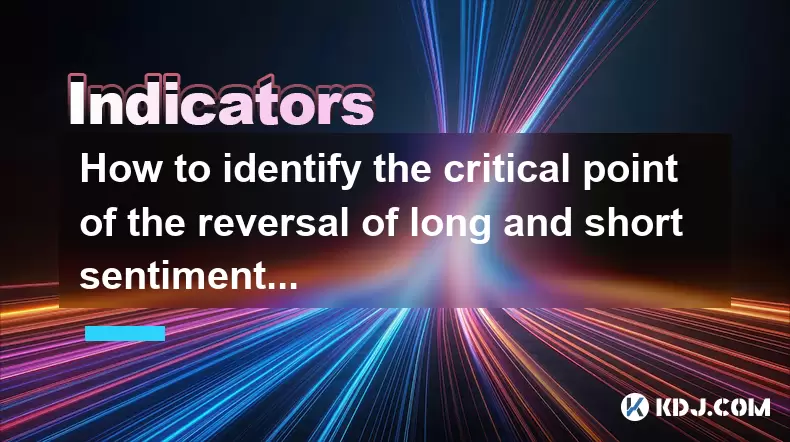
How to identify the critical point of the reversal of long and short sentiment through the K-line reverse package combination?
Jun 01,2025 at 03:36pm
In the world of cryptocurrency trading, understanding the sentiment of the market is crucial for making informed decisions. One effective method to gauge the potential reversal of long and short sentiment is through the analysis of K-line reverse package combinations. This technique involves studying specific patterns and formations within the K-line ch...
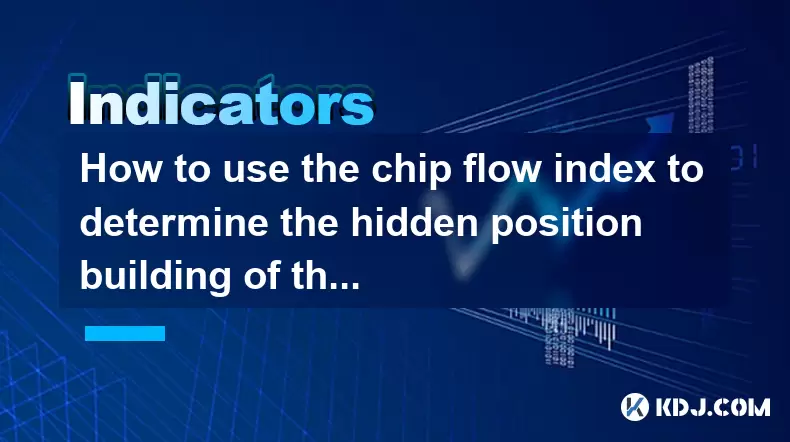
How to use the chip flow index to determine the hidden position building of the main funds?
Jun 01,2025 at 06:57pm
The Chip Flow Index (CFI), often referred to as the Volume Weighted Average Price (VWAP), is a crucial tool used by traders and investors to analyze the behavior of major funds in the cryptocurrency market. Understanding how to use the CFI can provide insights into the hidden position building of these main funds, which is essential for making informed ...

How to use the chip precipitation ratio to judge the completion of the medium and long-term bottom construction?
Jun 04,2025 at 03:36am
The chip precipitation ratio is a crucial metric used by investors to assess the accumulation of chips (or shares) at different price levels over time. This ratio helps in understanding the distribution of chips and can be a powerful tool for determining the completion of medium and long-term bottom construction in the cryptocurrency market. By analyzin...

How to capture the starting point of oversold rebound through the moving average gravity reversal strategy?
Jun 04,2025 at 01:01pm
The moving average gravity reversal strategy is a sophisticated approach used by traders to identify potential entry points for buying cryptocurrencies when they are considered oversold. This strategy leverages the concept of moving averages to pinpoint moments when a cryptocurrency might be poised for a rebound. In this article, we will delve into the ...

How to combine the three-dimensional analysis of volume and price to identify the golden buying point of breakthrough and retracement?
Jun 03,2025 at 11:42pm
In the dynamic world of cryptocurrencies, identifying the optimal buying points is crucial for maximizing profits and minimizing risks. One effective method to achieve this is by combining three-dimensional analysis of volume and price to pinpoint the golden buying points during breakouts and retracements. This article will delve into how to use this ap...

How to capture the key price position of the main test through the market lightning chart?
Jun 02,2025 at 06:07pm
Introduction to Market Lightning ChartThe market lightning chart is a powerful tool used by cryptocurrency traders to visualize price movements and identify key price positions. This chart type provides a detailed view of market activity, allowing traders to spot trends, reversals, and other significant price levels quickly. By understanding how to use ...

How to identify the critical point of the reversal of long and short sentiment through the K-line reverse package combination?
Jun 01,2025 at 03:36pm
In the world of cryptocurrency trading, understanding the sentiment of the market is crucial for making informed decisions. One effective method to gauge the potential reversal of long and short sentiment is through the analysis of K-line reverse package combinations. This technique involves studying specific patterns and formations within the K-line ch...

How to use the chip flow index to determine the hidden position building of the main funds?
Jun 01,2025 at 06:57pm
The Chip Flow Index (CFI), often referred to as the Volume Weighted Average Price (VWAP), is a crucial tool used by traders and investors to analyze the behavior of major funds in the cryptocurrency market. Understanding how to use the CFI can provide insights into the hidden position building of these main funds, which is essential for making informed ...
See all articles























































































